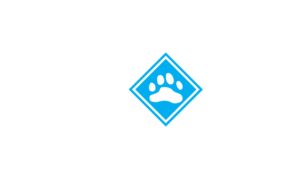Most people who have ski toured for long enough have had to deal with blisters at one time or another. There’s just something about stuffing your soft squishy feet into a rigid plastic shell that lends itself to turning said feet into hamburger. And once a blister has developed it’s all downhill from there… And not the good kind. Every step becomes painful and it becomes a physical and mental battle to keep going. Even minor blisters will slow a person down significantly. Blisters will definitely ruin your experience, and they increase risk for both the individual and the group by increasing exposure time to the elements. Below we’ll discuss what to do when a blister develops, but more importantly we’ll cover some tips that should help you avoid blisters altogether.
Blisters: Avoidance Tips & Suggestions
- Ensure Your Boots Fit Well: This should be pretty obvious, but the right fit can be very difficult to achieve. Many backcountry skiers come from the alpine/downhill world where ski boots tend to be fitted as closely and tightly as possible so that they offer as much control as possible. However, when ski touring you will be spending the bulk of your time skinning or hiking which is considerably more dynamic than riding a chairlift. Our advice… Try on as many different boots as possible and try sizes both up and down from your usual size. After identifying the boot with the best out-of-the-box fit go find a skilled bootfitter, such as the Skirack in Burlington, to continue working with you until everything is just right.
- Lubricate Your Feet: In certain situations even the best fitting boot can produce blisters. If you’re headed out for a long tour, a multi-day tour, or just want an added layer of security you should consider using an anti-chafe/anti-friction product such as Body Glide. Long distance runners and hikers have used this approach since the dawn of petroleum based products. Slather a layer on your heel, under your arch, the balls of your feet, and your toes. It will help keep things gliding smoothly and allow you to enjoy your tour.
- Wear A Liner Sock: Wearing a ultralight liner sock is another way to reduce friction and ward off blisters. You’ll want to choose an over-the-calf option like these so that they stay up and out of your boot.
- Do All Of The Above: We’ve combined all of these tips to successfully run the Corporate Cup 5k Challenge in Montpelier a number of times with zero damage to our feet (see video). If you’re serious about not getting blisters this is the way to go.
Blisters: How To Survive After One Develops
- Treat Early: Avoidance is still the best option. That means paying attention to your feet and not ignoring what is happening down there. We’ve been there. You tell yourself it’s probably not that bad, and by the time it’s bad enough to force you to do something about it there’s just a bloody stump where your heel used to be. So… Don’t ignore it. As soon as something feels off, stop and do something about it.
- Cover It Up – Duct Tape: One of the most common recommendations for surviving a blister is to cover it up with duct tape. This is one of those suggestions that seems to make sense. It’s really sticky on once side and pretty smooth and slippery on the other. Unfortunately, our experience with duct tape has never been all that positive. It doesn’t conform well to your feet and despite its stickiness it just doesn’t ever seem to stay in place for very long. If you don’t have anything else… It’s not the worst option. But if building a first aid kit there are better options.
- Cover It Up – Leukotape: Leukotape is what duct tape wishes it could be. It sticks well, is flexible and stretches so it conforms well to your body, and is highly breathable so it can be worn for multiple days. It can be torn to protect hot spots in weird locations, and should be in every backcountry skier’s first aid kit. Leukotape should not be used on existing blisters where the top layer of skin is not longer attached. It will pull off this loose skin and open up the blister.
- Cover It Up – Blister Cushions: Once a blister gets to the point where the top layer of skin is loose, blister cushions like these from Band-Aid work extremely well. They are very low profile, stick well and will stay put for multiple days, even through showers. They conform well to your feet and create a protective and slick barrier over the damaged spot. I keep a couple of these in each of my packs just in case. These cushions come in a variety of sizes and shapes. If building a first aid kit get a variety so that you are able to to address blisters on the heel, foot, and toes.
Ok… That’s all we’ve got.
Think Snow!










